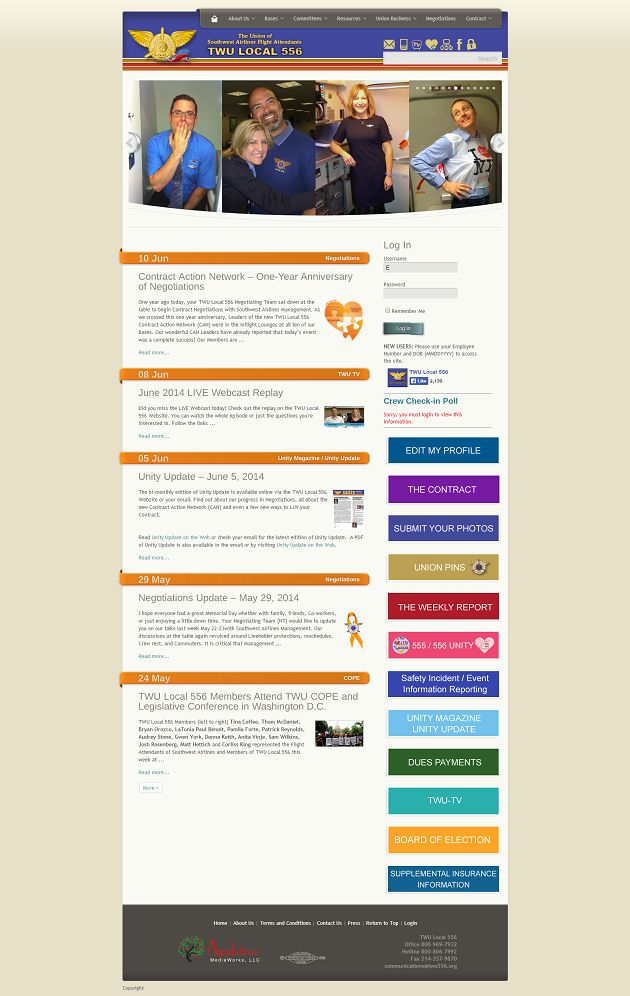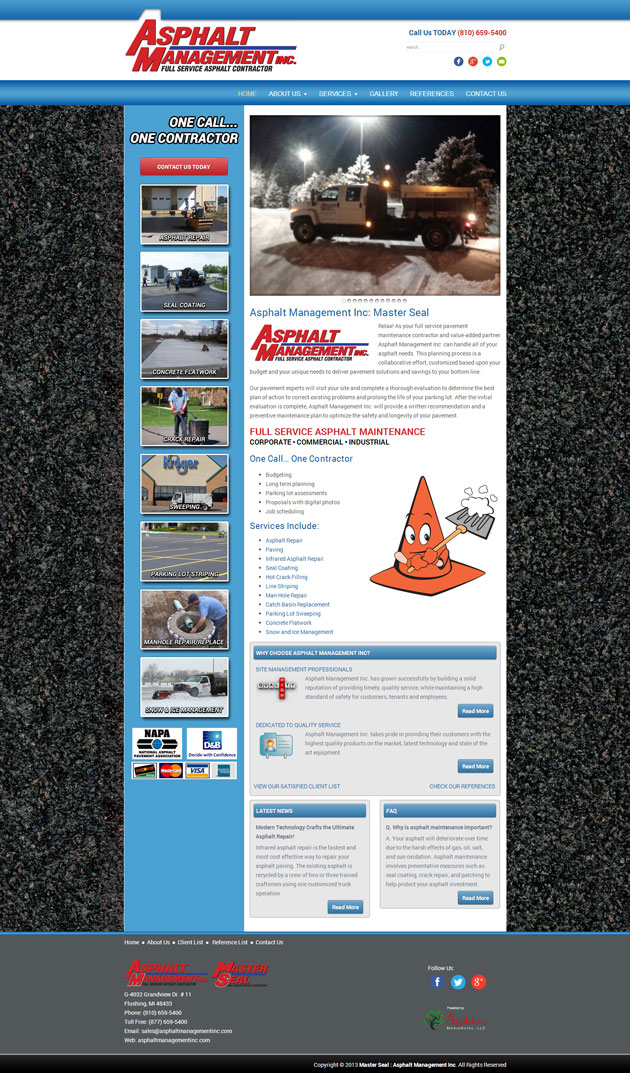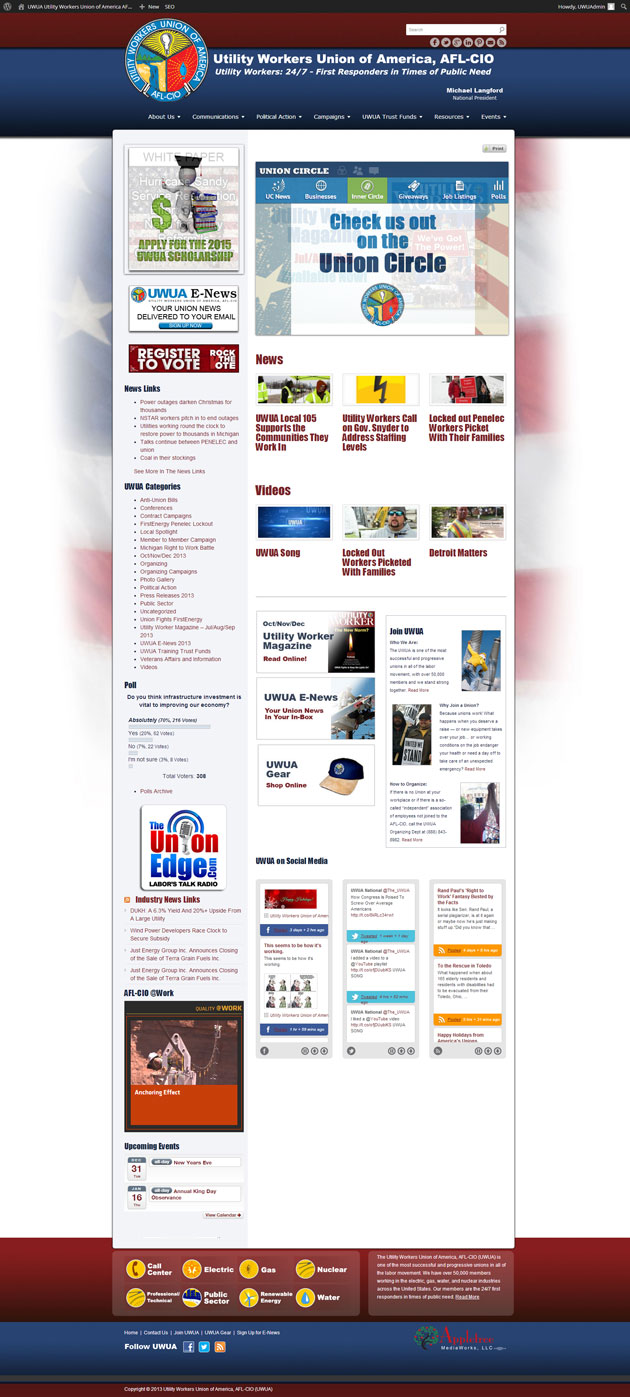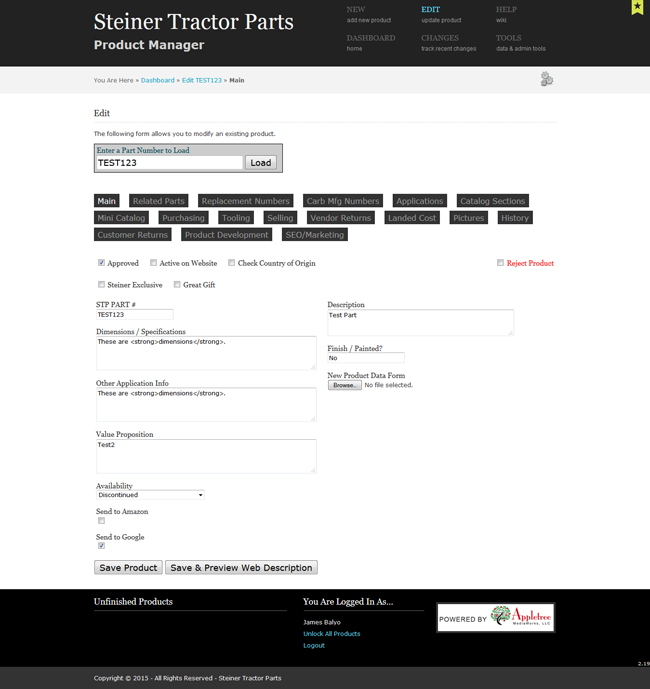Web Designer Vs. Web Developer

You may have heard somebody refer to themselves as either a web developer or a web designer (or even both). What is the difference? What does a developer do that a designer doesn’t, and vice versa?
Designer
We’re going to start here, since the design process comes before developing.
Web designers work in programs such as Adobe Photoshop to create the look of the website. They figure out how things should be laid out, and they create an image of what the final product should look like. Now-a-days, designers usually have to design a mobile version of a website as well as the desktop version. Over 50% of web browsing in done on a mobile device.
They figure out how things should be laid out, and they create an image of what the final product should look like. Now-a-days, designers usually have to design a mobile version of a website as well as the desktop version. Over 50% of web browsing in done on a mobile device.
This is a much more creative process than developing, and people with this job usually have a good eye for detail and like to create.
Front End Developer
The developer brings the design to life with “code”.
Developers have to make the design fully responsive. Responsiveness is how well the website adapts to different screen sizes (ex. monitor screen vs iPhone screen).

On top of that, developers have the responsiblity of setting fonts and positioning things on the site. They have to link all the pages together to ensure that when you click a link, it goes to the correct place.
This is a more technical process than designing. The developer focuses less on making the website look pretty, and more on fuctionality. They use various web languages to piece together a fully functioning website. HTML, CSS, and Javascript are usually used to bring a design to life.
Conclusion
It takes both a developer and a designer (or someone who can do both) to create a good looking and fully responsive website. Both roles are just as important to each other, as you can’t have one without the other.
Agreeing to the Terms of Internet Data Privacy Laws
Internet Data Privacy Laws for Website Owners
You’re probably tired of having to “Agree to Terms” to check out websites. Are you confused by the sudden increase of these kinds of popups on websites you’ve been visiting for years? New legislation is the reason for these boxes and notices.
Data privacy and security have become a priority for millions around the world. Accordingly, people are seeing the value inherent in their personal data. Because of this, users want greater control over where their data goes and who is handling it. This concern is not a conflated sense of paranoia, though. At least 16 high-profile data breaches were announced between January 2017 and April 2018 in the United States alone. The world is growing ever more connected through exchanged personal data. Because of this, parliaments and senates worldwide are considering ways to keep their citizens safe.
European Privacy Regulations: GDPR
Rewind to May of this year. Your email inbox was full of emails from retailers and media agencies communicating their compliance with the EU’s GDPR (General Data Privacy Rule). “That only applies to Europeans”, you probably thought. “Why does this matter to me?” The GDPR organizes and expands upon several prior data laws covering EU residents and companies. However, the boundaries of enforcement extend to all corners of the globe. Any firm or service that collects or handles the personal data of EU citizens is obliged to comply with this new standard, regardless of geographic boundary.
First, companies must seek the “freely given consent” before collecting data. Secondly, it’s crucial to clearly answer the questions of “How”, “Where”, and “Why” regarding data usage. With this in mind, it’s essential for companies to assess the ways they store, handle and process data to ensure responsible compliance. Services can’t follow in the footsteps of Equifax or Yahoo, who waited months to disclose news of massive intrusions. Specifically, GDPR requires notification following a breach within 72 hours from detection. Failing to abide these standards could result in massive penalties. Organizations at fault could even face private lawsuits brought by affected users in courts unsympathetic to risky data practices.
Data Protections – Coming to a State Near You
Let’s shift focus toward more familiar shores. As of July 2018, ten states are actively pursuing internet privacy regulations. Eleven further states have enacted or expanded legislation covering the data privacy rights of individuals. In particular, California stood out from the crowd of privacy movement states when it rolled out the California Consumer Privacy Act of 2018, or CaCPA. Similar in nature to GDPR, this new standard enters enforcement effective January 1, 2020.
“[The CaCP is]…a step forward, and it should be appreciated as a step forward when it’s been a long time since there were any steps.” – Dr. Aleecia McDonald, Professor of Public Policy and Internet Privacy at Stanford’s Center for Internet and Society, as quoted in The New York Times.
This push for data privacy is likely to move swiftly. Americans are increasingly appreciating the real-dollar value of their data and demanding companies – retailers, financial establishments and tech firms, especially – take steps to protect sensitive information. There is even a push to bring the “Internet of Things” under privacy rules. Such coverage would provide much needed protection against improper access or usage of the conversations you have within range of Alexa or other smart devices.
Your Business Liability
Companies hoping to avoid or ignore the need to revise data management and processing practices may be doing so at great risk. As a matter of fact, some website hosting companies are already threatening to remove non-compliant websites. No company is immune from this, either – Google and Facebook are facing $8.8 billion lawsuits for ignoring GDPR legislation. Experts nationwide anticipate that a wave of similar rules will soon arrive in the United States. In any case, if your business has a website and you store client information of any sort, you should give your liability and compliance priority.
Making your website GDPR compliant is fairly simple, though. A phone call or email to your website development company can get the ball rolling down the road of website data compliance, safeguarding your customers and your business.
Awareness and action are essential, but the steps you can take now are simple:
- Accountability: Have data management systems in place that you monitor closely.
- Purposes and Limitations: Explain the following to customers: The type of information you are collecting, How you will use it, Who you share personal data with, and How long you store data.
- Data Minimization: Think of it as rationing – don’t collect more data than you need or can safely store. Create a list of who has data access.
- Data Accuracy: Keep records as current as possible. Give users an easy way to request data erasure.
- Security & Integrity: Privacy-by-design systems limit access to a select number of authorized people. Notify users of which third parties also have access to their data.
- Storage Limits: Use software to encrypt and anonymize user information. Know where you store user data. Delete or discard data you no longer need or use.
- Lawful, Fair & Transparent: Provide contact information for users to request the review or removal of their information from your data systems.
Technology news can sometimes seem murky or confusing. We’d love to talk more if you have questions about digital data privacy laws, or want to know what steps to take to ensure your business and customers are protected.
[stylebox color=”red” icon=”delete” icon_size=”48″]Disclaimer: GDPR is broad in scope and compliance will vary greatly between organizations. This article should not be considered legal advice. This is informational only and aims to help bring you an awareness of GDPR. If you need legal advice after reading this article, please consult an attorney with your specific questions regarding GDPR. [/stylebox]
How to Make a Website Mobile Ready
Is Your Website Mobile Ready?
According to Pew Research Center, over half of adult Americans own a smartphone – a full 55% of the adult population, and that number is only increasing. This means it has become essential that a person using their phone to search the web can access and easily navigate your website. What makes a website good or bad for the internet? We’ll go over those points, and what you can do to ensure you know how to make a website mobile ready.
First, it can help to find out how many people are accessing your website via mobile devices. The simplest way to do this is take a look at Google Analytics. This tool has the option to see what platform, device, and browser people are using to access your site. Some sites are more likely to be accessed from a phone than others, but most sites have at least some content that people might want to quickly access on-the-go. Try to think about parts of your website that someone might want to access while out on the road. For example, if your business has a physical location, your address and phone number should be prominently displayed on your mobile site.
What are the problems with ordinary sites?
There are a few problems that make navigating a website tricky from a mobile device:
- Too much right-scrolling. Your computer monitor is going to be much wider than any mobile device, and if your website persists in maintaining that wider-than-high aspect ratio, it’s going to force people to scroll right when they expect to be scrolling down.
- Small Text. Phone screens are tiny, and if your text does not scale properly, users are going to have to continually ‘pinch’ their screens to zoom in. This gets tedious when you have to pinch AND side-scroll. That’s work, and people don’t want to work to find your info on a website.
- Images and Videos are not adjusted. It’s important that a user not have to do finger-screen gymnastics to view an image or watch a video.
- Website loads too slow. Phones using data plans are usually considerably slower to load content than a regular computer connected to high speed internet. Additionally, data plans can be limited and capped. Don’t make a user spend precious time and data downloading content that is unnecessary.
- Navigation is difficult. Dropdown menus and lots of small buttons and links might be perfectly fine for a mouse, but generally a person is not going to carry a stylus to click on an itty-bitty link. Be sure a button is big enough to afford even the larger-fingered among us some accuracy.
How make things mobile-friendly
All that said, making sure you have a mobile-friendly website is not the beast of a challenge it may seem like. You have a few options to consider:
- Build a mobile version of your site. Technically, you will have two sites, one optimized for mobile devices, the other for the web. The problem here is that both sites are going to need maintenance and updating, and forgetting the content for your mobile site is going to be potentially worse than an inconvenient site.
- Use a Mobile-Optimized theme. If your site is targeted primarily at mobile users, it may be worth the time to consider designing your website with a mobile device in mind, and then adjust it accordingly for computer-based use later.
- Build an app. Lately everyone has jumped on the app bandwagon, but an app to download on a device may be worth your time to consider if your site does special things or has features that are above and beyond the needs of a website. If your app is just going to be a downloadable reproduction of your website, however, it may not be worth the time and effort.
- Use a responsive design. Appletree Mediaworks’ more recent web designs are responsive, geared both for use on a computer’s web browser and mobile devices concurrently. Responsive sites seamlessly transform themselves to fit whatever device they are being viewed on. Many WordPress themes are designed to be responsive.
6-Pak Open

Custom Website Redesign, Full WordPress Upgrade, Client Training on WordPress, Blog Setup
TWU Local 556
“Appletree Team,
I know that our database upgrades took a lot of changes as decisions were worked through by our committee, we appreciate all of your patience and flexibility. I just want to say thank you and give an example of how we used it today to improve the service to our Union Members.I am sure you are aware of the wildfire impacting San Diego County. The new search fields make it VERY easy for us to search by zip code and find the 42 Flight Attendants that live within or nearby the evacuation areas. We are in the process of contacting these Flight Attendants to offer assistance. Without this latest database update we would have had to dig through excel files. This new process allows multiple people to access the data and we will be able to contact people quicker.
Thanks again!”

Customer Training, Web Site Maintenance, 3rd Party Integration, Custom PHP programming, Member Classifieds System Development, Member Dues System
TWU Local 556
Asphalt Management, Inc.
The redesign of Asphalt Management Inc. involves a complete site redesign using WordPress, galleries for a variety of services, Search Engine Optimization, and Social Media Integration, including Facebook, Twitter, and G+.

Complete Web Site Redesign, Custom WordPress Integration, Search Engine Optimization, Social Media Integration.
Asphalt Management, Inc , MasterSeal
UWUA – Utility Workers Union of America
“Appletree has done a fantastic job of helping our union greatly improve our entire communications. From a state of the art website to Facebook and Youtube and everything in between.
Appletree has done a great job for the Utility Workers Union. They get our information out in real time.”
Michael Langford
President
Utility Workers Union of America

Complete Web Site Redesign, Custom Joomla Template Integration, Intranet User System Programming, Content Management System Creation including Flash File Updating, Forum Creation, HTML E-mail Template Creation, Web Site Maintenance, 3rd Party Integration
Utility Workers Union of America
UWUA Power for America Training Trust Fund
“Appletree MediaWorks has provided the much-needed expertise we required in our web site redesign projects. Their design suggestions and incredibly quick implementation timeline have helped us create web sites that are user-friendly, informative and linked to all of our of social media sites. Appletree’s dedicated staff has been a tremendous help in our attempt to provide relevant web and social media sites that meet the needs of our long-range communication strategic plan.”
Rich Mata
National Training Director
UWUA, AFL-CIO

Custom Home Page Redesign, Media Link Integration, 3rd Party Widget Integration, Forum Integration, Social Media Management (Facebook, Twitter, YouTube, Custom News Page), Intranet User System Development, Web Site Maintenance, Videography Services
Steiner Tractor Parts
“The responsiveness of the team at Appletree is truly amazing. Having a partner like Appletree drastically reduces our internal IT expenses as we utilize the staff at Appletree to handle the majority of our IT tasks. This would not be possible without a trusted and responsive partner.”
Elizabeth Gross,
Steiner Tractor Parts

Custom Programming for E-Commerce Site, Hands-On Consultation for Continued E-Commerce
Growth, Web Site Maintenance, 3rd Party Integration
Steiner Tractor Parts Product Manager
Custom Programming of a Product Management System allowing for centralized data and price management across multiple complex systems with a detailed audit trail. Custom Built Integrations with multiple systems including Great Plains Accounting, Keyora Web, Amazon, Google Base, MyBuys Personalized Product Recommendations, SLI Systems Search, Multiple Print Catalogs and more.

“We have used Appletree MediaWorks for the past several years to support our website and marketing efforts. The product hub they built has helped to streamline many operations by allowing all of our product information to be managed in one location. A robust system hidden behind a simple, clean interface along with detailed change auditing has empowered our staff to make updates to our website and catalog without having to learn any new software. Appletree has also assisted in integrating this application with our legacy systems for a truly seamless experience.”
Elizabeth Gross,
Steiner Tractor Parts
Gentle Dentistry – Dr. Owocki, DDS
“I took a long time to get a web site up and running because I was looking for something perfect. Appletree Mediaworks put together a customized, clear and readable site for my office. They were very patient in the editing process to make things informational, yet readable. The fonts and color choices are the best. Without hesitation, I strongly recommend Appletree to create your web presence.”
David Owocki DDS PC
Fenton, MI

Custom Web Site Design, Complete Re-Branding Package, Organic Search Engine Marketing (SEM), Directory Presence Consulting, Logo Design, Print Collateral, Outdoor Signage, Customer Training, Web Site Maintenance









